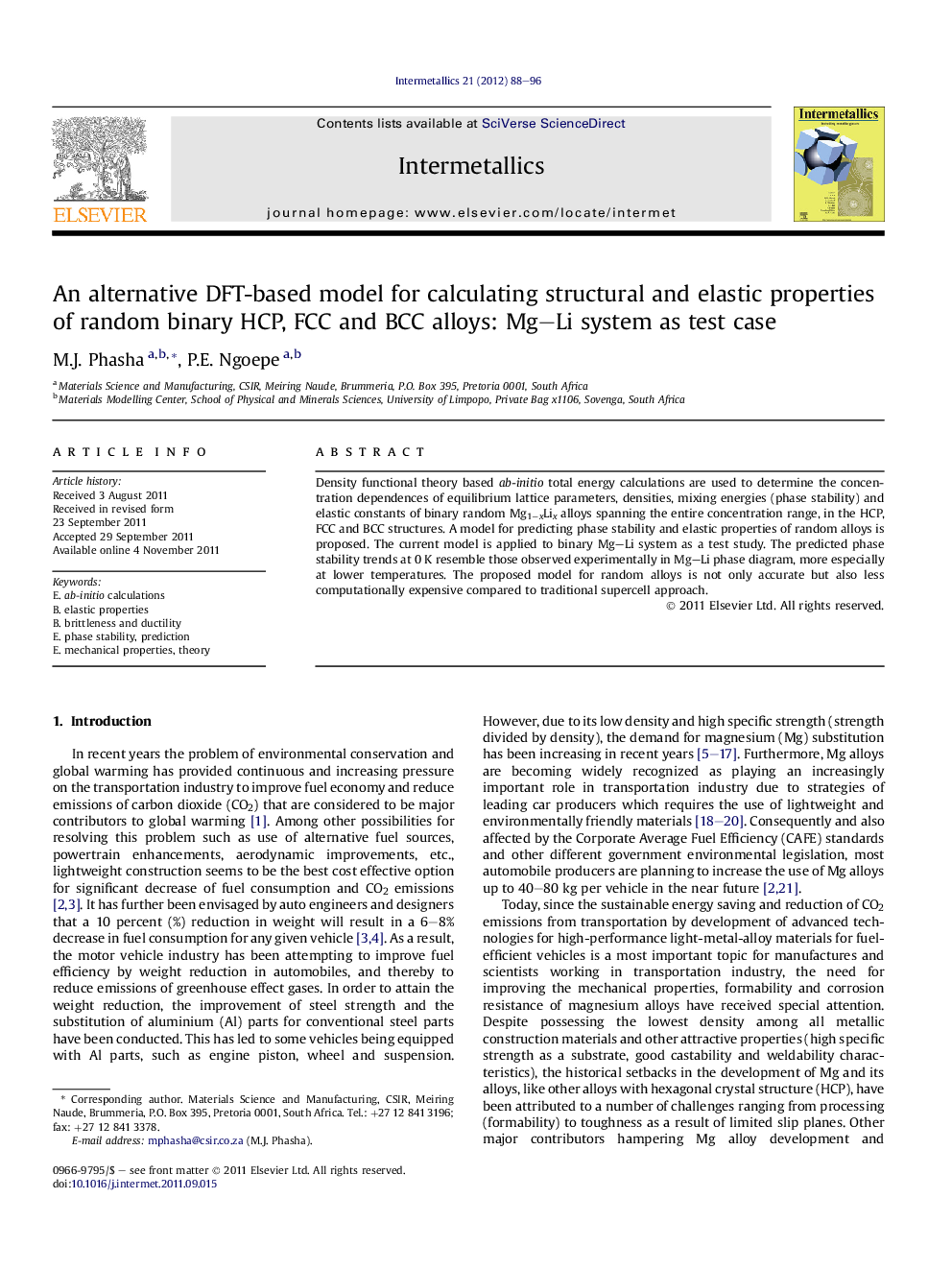| Article ID | Journal | Published Year | Pages | File Type |
|---|---|---|---|---|
| 1600628 | Intermetallics | 2012 | 9 Pages |
Density functional theory based ab- initio total energy calculations are used to determine the concentration dependences of equilibrium lattice parameters, densities, mixing energies (phase stability) and elastic constants of binary random Mg1−xLix alloys spanning the entire concentration range, in the HCP, FCC and BCC structures. A model for predicting phase stability and elastic properties of random alloys is proposed. The current model is applied to binary Mg–Li system as a test study. The predicted phase stability trends at 0 K resemble those observed experimentally in Mg–Li phase diagram, more especially at lower temperatures. The proposed model for random alloys is not only accurate but also less computationally expensive compared to traditional supercell approach.
Graphical abstractAn alternative simple DFT-based pseudo alloy approach used to mimic reliably the phase diagram of Mg–Li solid solution spanning the entire concentration range in HCP, FCC and BCC lattices is presented.Figure optionsDownload full-size imageDownload as PowerPoint slideHighlights► A new approach suitable to study of random alloys in HCP, FCC and BCC phases. ► It allows change of atomic composition while structure and symmetry are maintained. ► Phase stability and elastic properties of random Mg–Li alloys are predicted. ► Results at 0 K resemble those observed experimentally in Mg–Li phase diagram. ► Model is accurate and computing efficient compared to usual supercell approach.
